Entry Database : PDB / ID : 4gy5Title Crystal structure of the tandem tudor domain and plant homeodomain of UHRF1 with Histone H3K9me3 E3 ubiquitin-protein ligase UHRF1 Peptide from Histone H3.3 Keywords / Function / homology Function Domain/homology Component
/ / / / / / / / / / / / / / / / / / / / / / / / / / / / / / / / / / / / / / / / / / / / / / / / / / / / / / / / / / / / / / / / / / / / / / / / / / / / / / / / / / / / / / / / / / / / / / / / / / / / / / / / / / / / / / / / / / / / / / / / / / / / / / / / / / / / / / / / / / / / / / / / / / / / / / / / / / Biological species Homo sapiens (human)Method / / / Resolution : 2.956 Å Authors Cheng, J. / Yang, Y. / Fang, J. / Xiao, J. / Zhu, T. / Chen, F. / Wang, P. / Xu, Y. Journal : J.Biol.Chem. / Year : 2013Title: Structural insight into coordinated recognition of trimethylated histone H3 lysine 9 (H3K9me3) by the plant homeodomain (PHD) and tandem tudor domain (TTD) of UHRF1 (ubiquitin-like, containing ... Title : Structural insight into coordinated recognition of trimethylated histone H3 lysine 9 (H3K9me3) by the plant homeodomain (PHD) and tandem tudor domain (TTD) of UHRF1 (ubiquitin-like, containing PHD and RING finger domains, 1) proteinAuthors : Cheng, J. / Yang, Y. / Fang, J. / Xiao, J. / Zhu, T. / Chen, F. / Wang, P. / Li, Z. / Yang, H. / Xu, Y. History Deposition Sep 5, 2012 Deposition site / Processing site Revision 1.0 Nov 14, 2012 Provider / Type Revision 1.1 Nov 21, 2012 Group Revision 1.2 Aug 7, 2013 Group Revision 1.3 Nov 8, 2023 Group Data collection / Database references ... Data collection / Database references / Derived calculations / Refinement description Category chem_comp_atom / chem_comp_bond ... chem_comp_atom / chem_comp_bond / database_2 / pdbx_initial_refinement_model / pdbx_struct_conn_angle / struct_conn / struct_ref_seq_dif / struct_site Item _database_2.pdbx_DOI / _database_2.pdbx_database_accession ... _database_2.pdbx_DOI / _database_2.pdbx_database_accession / _pdbx_struct_conn_angle.ptnr1_auth_asym_id / _pdbx_struct_conn_angle.ptnr1_auth_comp_id / _pdbx_struct_conn_angle.ptnr1_auth_seq_id / _pdbx_struct_conn_angle.ptnr1_label_asym_id / _pdbx_struct_conn_angle.ptnr1_label_atom_id / _pdbx_struct_conn_angle.ptnr1_label_comp_id / _pdbx_struct_conn_angle.ptnr1_label_seq_id / _pdbx_struct_conn_angle.ptnr2_auth_asym_id / _pdbx_struct_conn_angle.ptnr2_auth_seq_id / _pdbx_struct_conn_angle.ptnr2_label_asym_id / _pdbx_struct_conn_angle.ptnr3_auth_asym_id / _pdbx_struct_conn_angle.ptnr3_auth_comp_id / _pdbx_struct_conn_angle.ptnr3_auth_seq_id / _pdbx_struct_conn_angle.ptnr3_label_asym_id / _pdbx_struct_conn_angle.ptnr3_label_atom_id / _pdbx_struct_conn_angle.ptnr3_label_comp_id / _pdbx_struct_conn_angle.ptnr3_label_seq_id / _pdbx_struct_conn_angle.value / _struct_conn.pdbx_dist_value / _struct_conn.pdbx_leaving_atom_flag / _struct_conn.ptnr1_auth_asym_id / _struct_conn.ptnr1_auth_comp_id / _struct_conn.ptnr1_auth_seq_id / _struct_conn.ptnr1_label_asym_id / _struct_conn.ptnr1_label_atom_id / _struct_conn.ptnr1_label_comp_id / _struct_conn.ptnr1_label_seq_id / _struct_conn.ptnr2_auth_asym_id / _struct_conn.ptnr2_auth_seq_id / _struct_conn.ptnr2_label_asym_id / _struct_ref_seq_dif.details / _struct_site.pdbx_auth_asym_id / _struct_site.pdbx_auth_comp_id / _struct_site.pdbx_auth_seq_id
Show all Show less
 Yorodumi
Yorodumi Open data
Open data Basic information
Basic information Components
Components Keywords
Keywords Function and homology information
Function and homology information Homo sapiens (human)
Homo sapiens (human) X-RAY DIFFRACTION /
X-RAY DIFFRACTION /  SYNCHROTRON /
SYNCHROTRON /  MOLECULAR REPLACEMENT / Resolution: 2.956 Å
MOLECULAR REPLACEMENT / Resolution: 2.956 Å  Authors
Authors Citation
Citation Journal: J.Biol.Chem. / Year: 2013
Journal: J.Biol.Chem. / Year: 2013 Structure visualization
Structure visualization Molmil
Molmil Jmol/JSmol
Jmol/JSmol Downloads & links
Downloads & links Download
Download 4gy5.cif.gz
4gy5.cif.gz PDBx/mmCIF format
PDBx/mmCIF format pdb4gy5.ent.gz
pdb4gy5.ent.gz PDB format
PDB format 4gy5.json.gz
4gy5.json.gz PDBx/mmJSON format
PDBx/mmJSON format Other downloads
Other downloads https://data.pdbj.org/pub/pdb/validation_reports/gy/4gy5
https://data.pdbj.org/pub/pdb/validation_reports/gy/4gy5 ftp://data.pdbj.org/pub/pdb/validation_reports/gy/4gy5
ftp://data.pdbj.org/pub/pdb/validation_reports/gy/4gy5 Links
Links Assembly
Assembly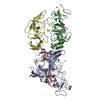
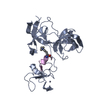
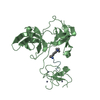


 Components
Components Homo sapiens (human) / Gene: UHRF1 / Production host:
Homo sapiens (human) / Gene: UHRF1 / Production host: 
 Homo sapiens (human) / References: UniProt: P84243
Homo sapiens (human) / References: UniProt: P84243 X-RAY DIFFRACTION / Number of used crystals: 1
X-RAY DIFFRACTION / Number of used crystals: 1  Sample preparation
Sample preparation SYNCHROTRON / Site:
SYNCHROTRON / Site:  SSRF
SSRF  / Beamline: BL17U / Wavelength: 0.97927 Å
/ Beamline: BL17U / Wavelength: 0.97927 Å Processing
Processing MOLECULAR REPLACEMENT
MOLECULAR REPLACEMENT Movie
Movie Controller
Controller



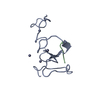
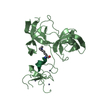




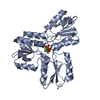
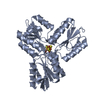
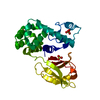
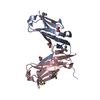
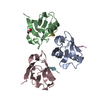
 PDBj
PDBj













